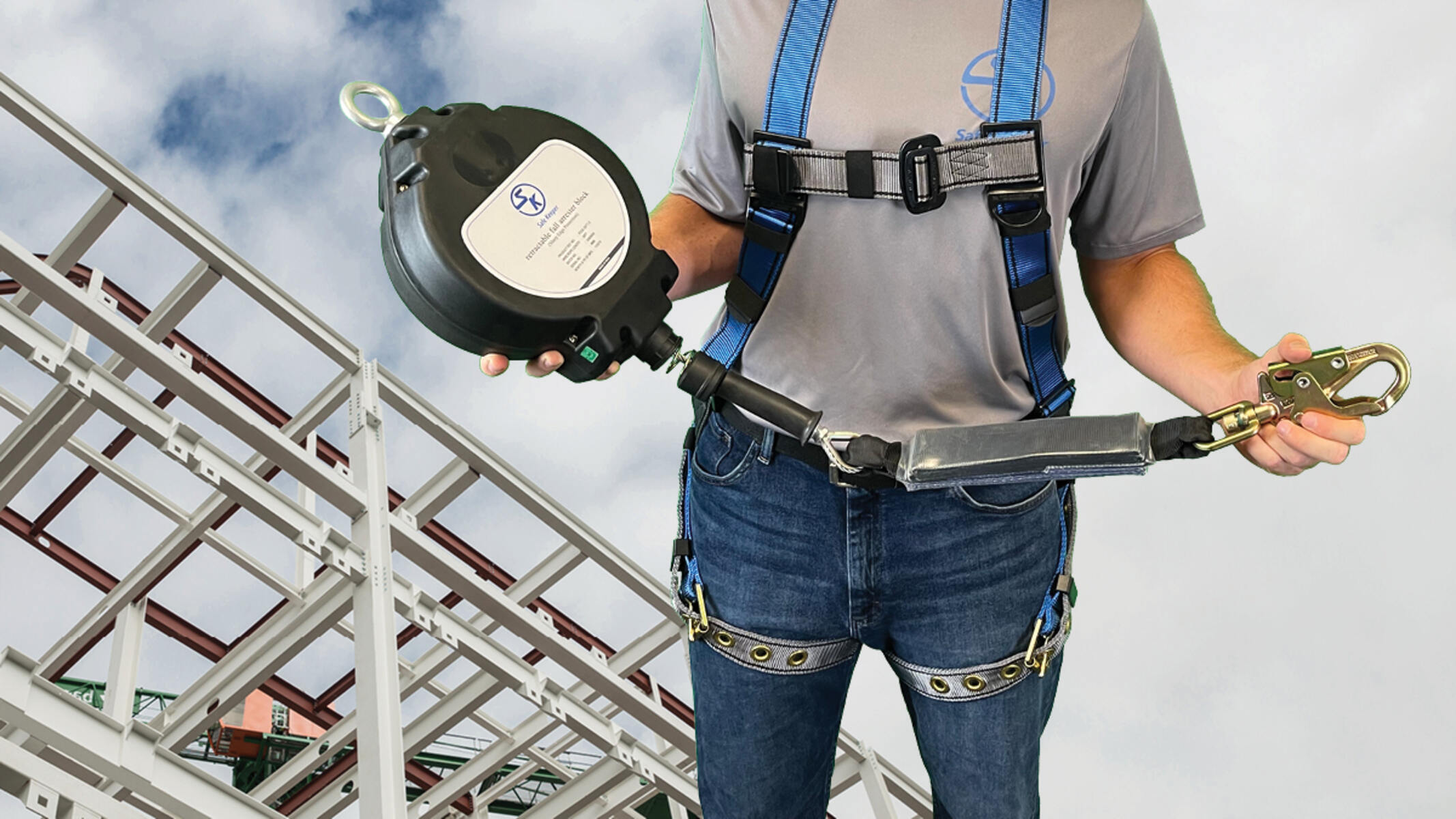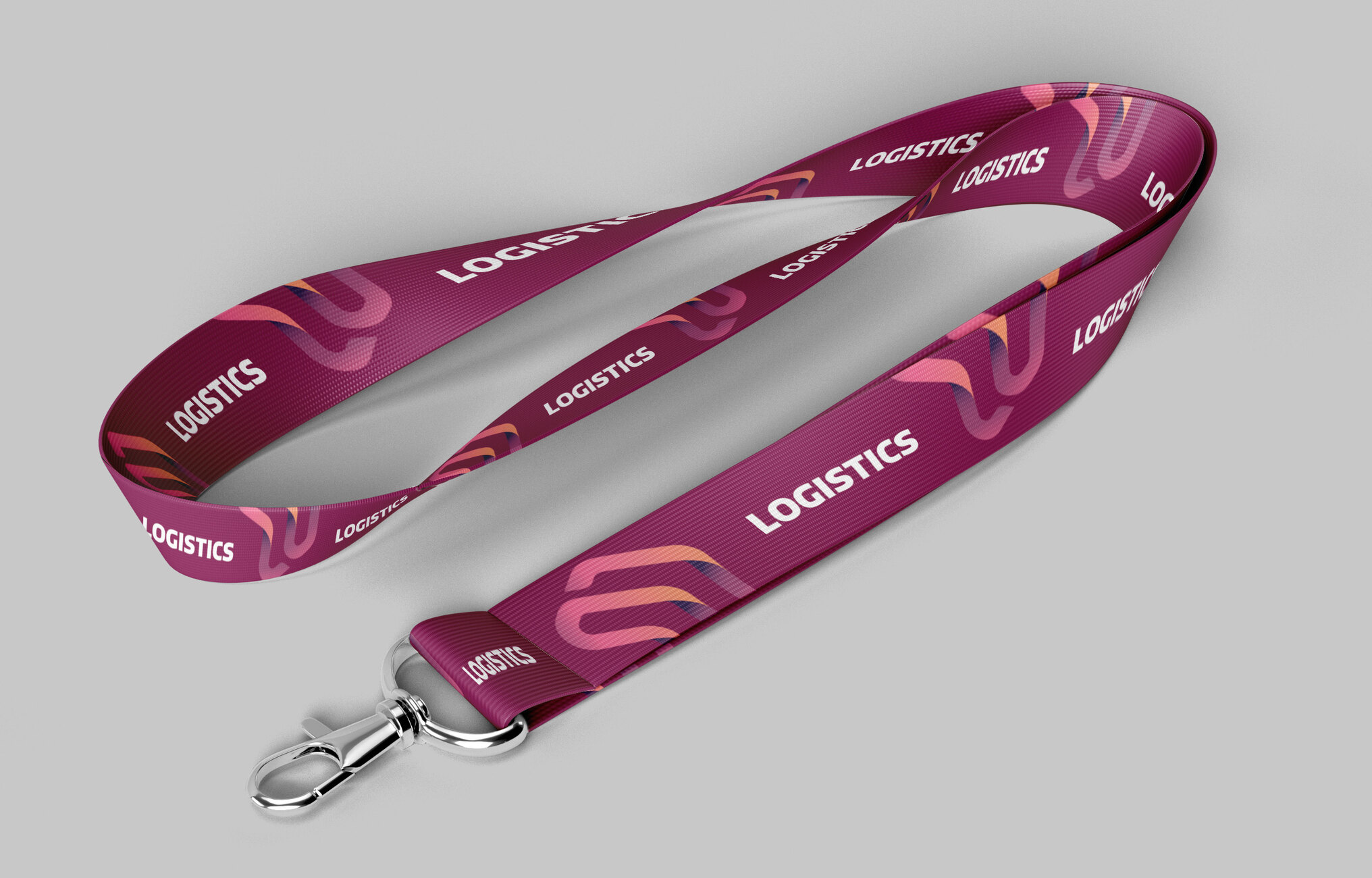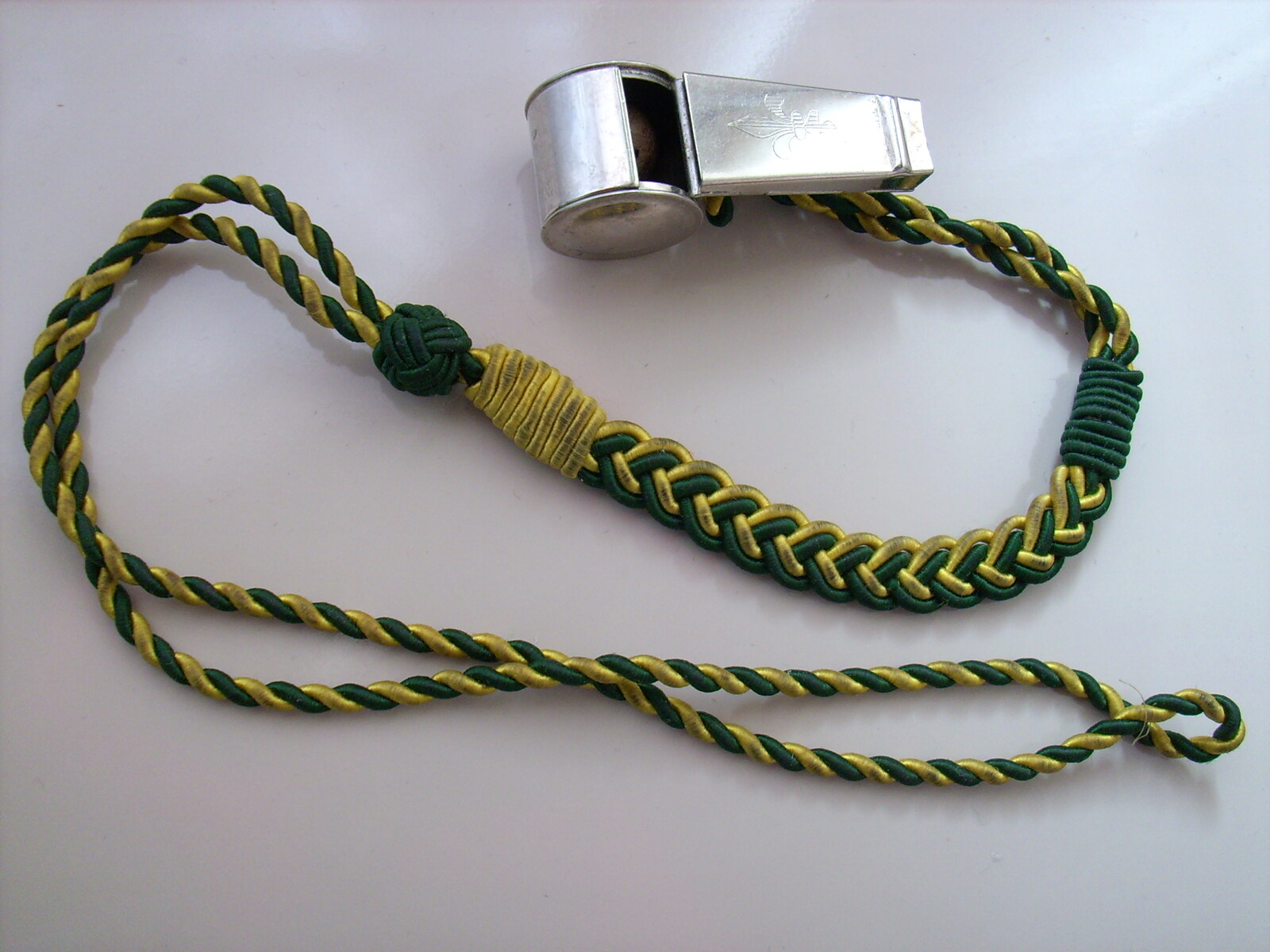Introduction
Retractable lanyards have become indispensable accessories in various industries, offering a convenient and secure solution for tethering tools, equipment, and personal protective gear. These innovative devices are designed to enhance safety and efficiency in the workplace, making them a crucial component of occupational safety protocols. By understanding the mechanism behind retractable lanyards, individuals can gain valuable insights into their functionality and the benefits they offer.
Retractable lanyards are widely utilized in construction, manufacturing, and maintenance sectors, where workers are required to operate at heights or in environments with potential fall hazards. The versatility of these lanyards extends beyond industrial settings, as they are also employed in recreational activities such as rock climbing and hiking. This widespread adoption underscores their significance in mitigating the risks associated with working at elevated positions.
The intricate design and engineering of retractable lanyards reflect the commitment to prioritizing safety without compromising on user comfort and mobility. As such, these devices serve as a testament to the continuous advancements in occupational safety practices, aligning with the overarching goal of safeguarding workers' well-being.
In the subsequent sections, we will delve into the components and operational principles of retractable lanyards, shedding light on the underlying mechanisms that enable these devices to function effectively. Furthermore, we will explore the compelling benefits of incorporating retractable lanyards into safety protocols, emphasizing their role in promoting a secure work environment while facilitating optimal productivity.
By unraveling the intricacies of retractable lanyards, individuals can make informed decisions regarding their selection and usage, thereby contributing to the overarching objective of fostering a culture of safety and risk mitigation in professional and recreational settings.
What is a Retractable Lanyard?
A retractable lanyard, also known as a self-retracting lanyard (SRL), is a vital safety tool designed to prevent falls and minimize the impact of potential accidents in various work environments. It consists of a durable, high-strength cable or webbing that is housed within a compact and robust casing. The primary function of a retractable lanyard is to provide a reliable means of securing individuals working at heights, allowing them to move freely while ensuring their safety.
Unlike traditional lanyards, which are static and can lead to excessive slack, retractable lanyards feature a mechanism that automatically retracts the cable or webbing, maintaining a taut connection between the user and the anchorage point. This dynamic functionality significantly reduces the risk of tripping, entanglement, or unintentional snagging, thereby enhancing overall safety.
The housing of a retractable lanyard incorporates a spring-loaded drum or a braking system, which controls the extension and retraction of the cable or webbing. This mechanism enables the lanyard to adapt to the user's movements, offering a balance between freedom of motion and immediate arrest in the event of a fall. Additionally, the casing provides protection for the internal components, ensuring durability and longevity in demanding work environments.
Retractable lanyards are available in various configurations to cater to diverse applications, including single- and dual-line models. Single-line retractable lanyards are suitable for individual use, while dual-line variants accommodate multiple users, allowing for simultaneous operation without compromising safety.
The compact and lightweight nature of retractable lanyards makes them highly portable and easy to deploy, enhancing user convenience without sacrificing functionality. Furthermore, these devices are engineered to withstand rigorous use and harsh environmental conditions, making them indispensable tools for professionals across industries such as construction, maintenance, and utilities.
In essence, a retractable lanyard serves as a proactive safety measure, empowering workers to perform tasks at elevated positions with confidence and peace of mind. Its intuitive design and reliable performance underscore its pivotal role in mitigating fall-related risks, thereby contributing to the overarching goal of fostering a secure and productive work environment.
Components of a Retractable Lanyard
A retractable lanyard comprises several integral components that collectively contribute to its functionality and reliability. Understanding these components is essential for gaining insights into the intricate design and operational principles of these safety devices. The key components of a retractable lanyard include:
-
Housing: The housing serves as the outer casing that encloses the internal mechanisms of the retractable lanyard. Constructed from robust materials such as durable plastics or metal alloys, the housing provides protection for the internal components while ensuring resilience against impact and environmental elements. This component is pivotal in safeguarding the integrity of the retractable lanyard, thereby enhancing its longevity and operational effectiveness.
-
Cable or Webbing: The retractable lanyard features a high-strength cable or webbing that extends and retracts based on the user's movements. This component is engineered to withstand substantial loads and provide a reliable connection between the user and the anchorage point. The choice between cable and webbing is often dictated by the specific application and environmental factors, with both options offering exceptional tensile strength and durability.
-
Braking Mechanism: The braking mechanism within the housing regulates the extension and retraction of the cable or webbing. It is designed to activate in the event of a sudden force or acceleration, effectively arresting the user's fall and minimizing the impact of a potential incident. This critical component embodies the core safety function of the retractable lanyard, underscoring its role in preventing falls and ensuring user protection.
-
Connector: The connector, also known as the snap hook or carabiner, facilitates the attachment of the retractable lanyard to the user's harness or anchorage point. This component is engineered for secure and swift connections, enabling effortless deployment while maintaining a robust link between the lanyard and the relevant interfaces. The connector's design prioritizes user safety and convenience, aligning with the overarching objective of enhancing operational efficiency and risk mitigation.
-
Internal Spring Mechanism: In some retractable lanyard models, an internal spring mechanism contributes to the controlled retraction of the cable or webbing. This component ensures smooth and consistent operation, optimizing the lanyard's responsiveness to the user's movements while minimizing slack and potential hazards. The internal spring mechanism embodies precision engineering, harmonizing user mobility with proactive fall protection.
By comprehensively understanding the components of a retractable lanyard, individuals can appreciate the meticulous engineering and robust construction that underpin these essential safety devices. Each component plays a pivotal role in ensuring user safety, operational reliability, and resilience in diverse work environments, reaffirming the significance of retractable lanyards in mitigating fall-related risks and promoting secure work practices.
How Retractable Lanyards Work
Retractable lanyards operate on a sophisticated mechanism designed to seamlessly balance user mobility with proactive fall protection. The fundamental principle underlying the functionality of these safety devices revolves around their ability to automatically adjust the length of the connecting cable or webbing in response to the user's movements and potential fall scenarios.
The retractable lanyard's housing encapsulates a spring-loaded drum or a braking system, which serves as the core control mechanism governing the extension and retraction of the cable or webbing. As the user moves within the permissible range, the retractable lanyard allows for unhindered mobility, with the internal mechanism delicately managing the cable or webbing's length to accommodate the user's actions.
In the event of a sudden force or acceleration, such as a fall, the braking system within the housing swiftly engages, activating a rapid deceleration process to arrest the user's descent. This instantaneous response is pivotal in mitigating the impact of a fall, safeguarding the user from potential injuries, and facilitating a swift and controlled recovery.
The internal spring mechanism, where applicable, contributes to the smooth and consistent retraction of the cable or webbing, ensuring that the retractable lanyard remains taut and responsive to the user's movements. This feature minimizes the risk of slack, entanglement, or obstruction, thereby enhancing user safety and operational efficiency.
Furthermore, the connector, typically a robust snap hook or carabiner, plays a crucial role in maintaining a secure attachment between the retractable lanyard and the user's harness or anchorage point. This seamless connection reinforces the overall effectiveness of the retractable lanyard, ensuring that it functions as an integral component of the user's fall protection system.
The intricate interplay of these components underscores the holistic approach to fall prevention and safety management embodied by retractable lanyards. By harmonizing advanced engineering with user-centric design, these devices empower individuals to execute their tasks with confidence, knowing that they are equipped with a reliable and responsive safety solution.
In essence, the operational prowess of retractable lanyards lies in their ability to seamlessly adapt to dynamic work environments while proactively mitigating fall-related risks. This intrinsic functionality aligns with the overarching goal of fostering a secure and productive work culture, where safety remains paramount in all operational endeavors.
Benefits of Using Retractable Lanyards
Retractable lanyards offer a myriad of compelling benefits that significantly enhance safety, operational efficiency, and user confidence in various work environments. These advantages underscore the indispensable role of retractable lanyards as proactive safety solutions, aligning with the overarching objective of fostering secure and productive practices. The key benefits of using retractable lanyards include:
-
Fall Prevention: Retractable lanyards are engineered to prevent falls by automatically adjusting the length of the connecting cable or webbing in response to the user's movements. This dynamic functionality minimizes the risk of excessive slack, entanglement, or obstruction, ensuring that users can perform tasks at elevated positions with a reduced likelihood of falling.
-
Enhanced Mobility: Unlike traditional static lanyards, retractable lanyards facilitate unhindered mobility while maintaining a taut connection between the user and the anchorage point. This freedom of movement empowers workers to navigate their work environments with agility and flexibility, contributing to operational efficiency without compromising safety.
-
Immediate Arrest: In the event of a fall, the braking mechanism within the retractable lanyard's housing swiftly engages, enabling rapid deceleration to arrest the user's descent. This instantaneous response mitigates the impact of a fall, minimizing the potential for injuries and ensuring a controlled recovery process.
-
User Comfort: Retractable lanyards are designed to prioritize user comfort, featuring lightweight and ergonomic construction that minimizes fatigue and discomfort during prolonged use. The seamless integration of safety and user-centric design enhances overall work experience, fostering a conducive environment for optimal performance.
-
Adaptability: These versatile safety devices are suitable for a wide range of applications, from construction and maintenance to recreational activities such as rock climbing and hiking. The adaptability of retractable lanyards underscores their utility across diverse industries and settings, catering to the safety needs of professionals and enthusiasts alike.
-
Durability and Longevity: Constructed from robust materials and engineered to withstand rigorous use, retractable lanyards exhibit exceptional durability and longevity. This resilience ensures that these safety tools remain reliable assets in demanding work environments, contributing to cost-effective safety solutions.
-
Compliance with Safety Standards: Retractable lanyards adhere to stringent safety standards and regulations, providing assurance that they meet industry requirements for fall protection. By incorporating these compliant devices into safety protocols, organizations demonstrate a commitment to upholding best practices and safeguarding their workforce.
In essence, the benefits of using retractable lanyards extend beyond mitigating fall-related risks; they encapsulate a holistic approach to safety, user empowerment, and operational optimization. By integrating these safety devices into professional and recreational endeavors, individuals and organizations can cultivate a culture of safety, resilience, and performance excellence.
Safety Considerations for Retractable Lanyards
When utilizing retractable lanyards as integral components of fall protection systems, it is imperative to prioritize safety considerations to ensure optimal performance and risk mitigation. The following safety considerations underscore the critical aspects of employing retractable lanyards in various work environments:
-
Regular Inspection and Maintenance: Conducting routine inspections and maintenance checks on retractable lanyards is essential to verify their integrity and operational functionality. This proactive approach allows for the early detection of potential issues, such as wear and tear, damaged components, or compromised mechanisms, ensuring that the lanyards remain reliable safety assets.
-
Proper Training and Usage: Providing comprehensive training on the correct usage and handling of retractable lanyards is paramount to equip individuals with the necessary knowledge and skills to maximize their effectiveness. Understanding how to deploy, adjust, and maintain these safety devices empowers users to leverage their capabilities while adhering to recommended safety practices.
-
Compatibility with Anchorage Points: Ensuring the compatibility of retractable lanyards with designated anchorage points is crucial to guarantee secure connections and optimal performance. Employing suitable connectors and verifying the structural integrity of anchorage points mitigates the risk of potential disengagement or compromised safety connections.
-
Environmental Considerations: Assessing environmental factors such as temperature extremes, exposure to chemicals, and abrasive surfaces is essential to evaluate the impact on the durability and functionality of retractable lanyards. Adhering to manufacturer guidelines regarding environmental limitations safeguards the lanyards from adverse conditions, preserving their reliability.
-
Fall Clearance Calculations: Calculating the required fall clearance based on the specific configuration of the retractable lanyard and the work environment is critical to preemptively address potential fall scenarios. Understanding the lanyard's dynamic performance and the corresponding clearance distances ensures that adequate safeguards are in place to mitigate fall-related risks.
-
Compliance with Regulations: Adhering to industry standards, regulatory requirements, and manufacturer recommendations is fundamental to ensure that retractable lanyards are utilized in accordance with prescribed safety protocols. Compliance with relevant regulations underscores a commitment to upholding best practices and safeguarding individuals in diverse work settings.
By conscientiously addressing these safety considerations, organizations and individuals can fortify their safety protocols and operational practices, fostering a culture of proactive risk management and user protection. Incorporating these considerations into safety planning and execution underscores a commitment to enhancing safety standards and promoting a secure work environment.
Conclusion
In conclusion, the mechanism behind retractable lanyards represents a pinnacle of safety innovation, embodying a harmonious blend of advanced engineering, user-centric design, and proactive fall protection. These indispensable safety devices serve as steadfast guardians, empowering workers in various industries to execute their tasks with confidence and peace of mind, even in challenging work environments.
The intricate components of retractable lanyards, including the housing, cable or webbing, braking mechanism, connector, and internal spring mechanism, collectively contribute to their operational effectiveness and reliability. By seamlessly balancing user mobility with immediate fall arrest capabilities, these safety devices exemplify a proactive approach to mitigating fall-related risks, underscoring their pivotal role in safeguarding individuals in elevated work settings.
The benefits of utilizing retractable lanyards extend far beyond fall prevention, encompassing enhanced mobility, user comfort, adaptability, and compliance with safety standards. These compelling advantages reflect the holistic impact of retractable lanyards on safety, operational efficiency, and user empowerment, reinforcing their status as indispensable assets in diverse work environments.
Furthermore, prioritizing safety considerations such as regular inspection and maintenance, proper training and usage, compatibility with anchorage points, environmental assessments, fall clearance calculations, and compliance with regulations underscores a commitment to fostering a culture of safety and risk mitigation. By integrating these considerations into safety protocols, organizations and individuals can elevate their safety standards and promote a secure work environment.
In essence, the mechanism behind retractable lanyards encapsulates a narrative of resilience, innovation, and unwavering commitment to user safety. By unraveling the intricacies of these safety devices and embracing their multifaceted benefits, individuals and organizations can forge a path towards a future where safety remains paramount, and productivity thrives in tandem with proactive risk management. As we continue to navigate dynamic work landscapes, retractable lanyards stand as steadfast sentinels, embodying the ethos of safety, reliability, and operational excellence.

























